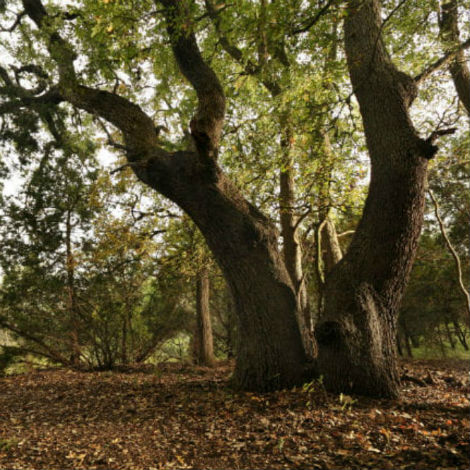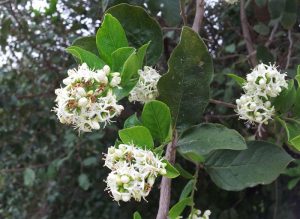Cool weather months are ideal for adding trees to your landscape. Just make sure they’re Texas-tough.
Note: In celebration of central Texas’ tree-planting season from October to February, this occasional series will highlight a few favorite trees for cultivating more shade in the residential landscape.
The ongoing drought and relentless heatwave left many holes in landscapes where cherished plants stood for years. Because of that, the process of choosing replacement plants has been a hot topic this year.

And the timing could not be better: cool weather months are ideal for adding trees to your landscape.
Ever notice that the most common tree planted in San Antonio’s sprawling new neighborhoods is live oak? This makes sense because live oaks are excellent native trees. Some live oaks that were spared by builders are centuries old. They’re resilient, moderately fast growing, and known to provide excellent habitat for wildlife.
While it’s smart to continue choosing what works, it also makes sense to diversify. Move over live oak, it’s time to choose anacua!

A member of the Borage or “forget-me-nots” family, this tough Texan is endemic to south Texas and eastern Mexico. Originally known as Tlalahuacate in the Nahuatl language, it also goes by many other names, including knockaway, manzanita, sandpaper tree, vogelbeerbaum and sugarberry anacua.
These common names offer insights into its many uses and the connections it has with the people who cherish it. The leaves of the anacua are so scabrous (rough) that they were once employed as makeshift sandpaper. And the monikers sugarberry and manzanita allude to its delectable golden fruits. Even its hard wood has been used for making tools, posts and furniture.
This tree is happy in the shade of the understory of a live oak or in full sun, although if in full sun it appreciates a bit of extra water during its initial years. Consider starting with a smaller specimen — a little patience will pay off later! Planting a huge 50-gallon tree will require a lot more water to survive its first few summers.
Once established, the anacua demands no care, making it a water-smart choice for those seeking a low-maintenance, ornamental tree. Its dense branching canopy is perfect for providing natural screening, but it’s worth noting that it tends to send up numerous suckers that will create a sort of vertical thicket providing ideal wildlife habitat.
Over time, these suckers fuse to form a single, fluted trunk no more than two feet wide and it usually tops out at 40 feet. A traditional tree shape is easily achieved by simply snipping the suckers.
In April, anacua adorns itself with clusters of fragrant white flowers that resemble a blanket of snow against dark green foliage. These blooms serve as a vital nectar source for various pollinators. As spring transitions into summer, the tree yields delicious golden fruits, a favorite among wildlife (including me) and a critical food source for spring migrating birds.
As Texans grapple with the recent memory of winter storms and record-setting summers, the hope for a mild and rainy winter lingers in the air. In the event of another winter storm, anacua trees will likely lose their leaves for that year, but their hardy nature ensures they’ll weather the elements.
It’s interesting to note that most evergreen trees, like mountain laurels, yaupon holly and ashe juniper (aka mountain cedar) remained unfazed by freezing temperatures during winter storm Uri, unlike semi-evergreen trees that shed their leaves during the storm.
During milder winters, these semi-evergreen trees adopt a more evergreen habit. Also, the further north it’s planted the less likely it is to be evergreen. Much like our beloved live oaks, anacua doesn’t qualify as a true evergreen because it sheds and replaces its leaves in the spring.
Still, anacua possesses an impressive list of qualities that make it a standout addition to any garden. It’s a fast-growing, handsome hardwood tree that thrives in dry, difficult soils and is not prone to disease, or pests. Anacua provides many of the same desirable qualities as live oaks — not just as a replacement, but as a companion.
Trees planted in November will have several months to get established. Plant them now and by spring they’re strong enough to face the rigors of summer without serious stress or water deficit.
Why not start a new holiday tradition and after your feast get outside to plant a happy little tree? Bonus: When you purchase and plant a qualified shade tree in your yard, CPS Energy will give you a $50 rebate!




